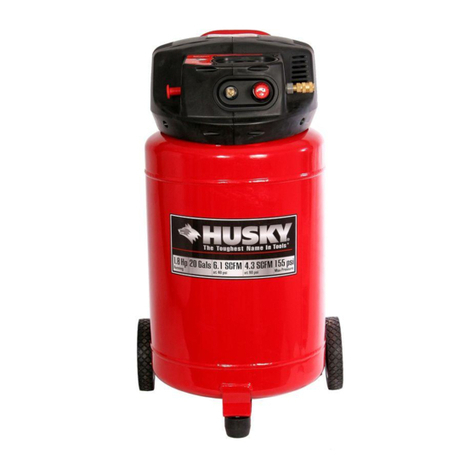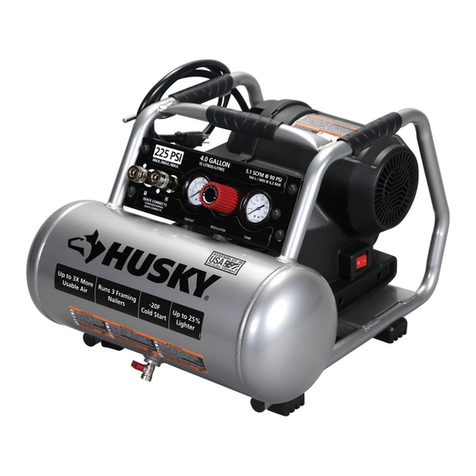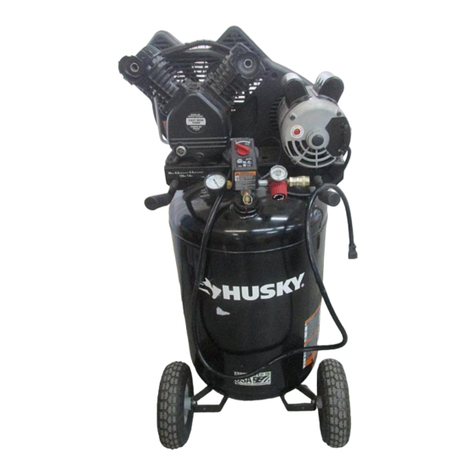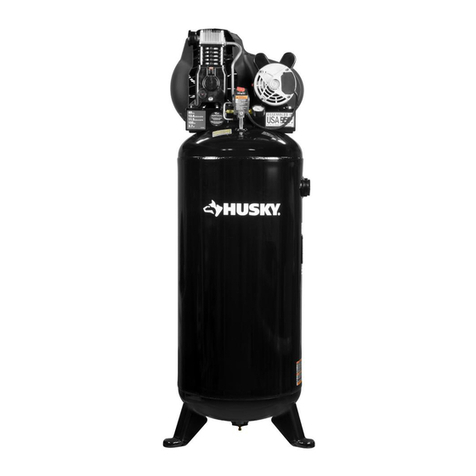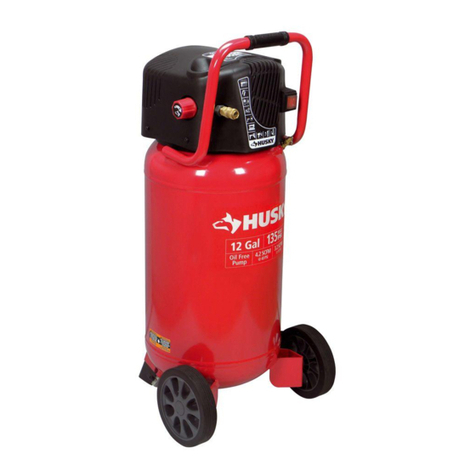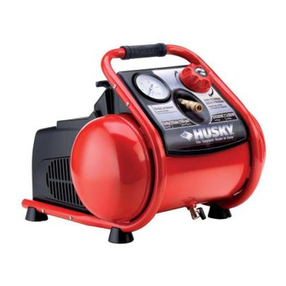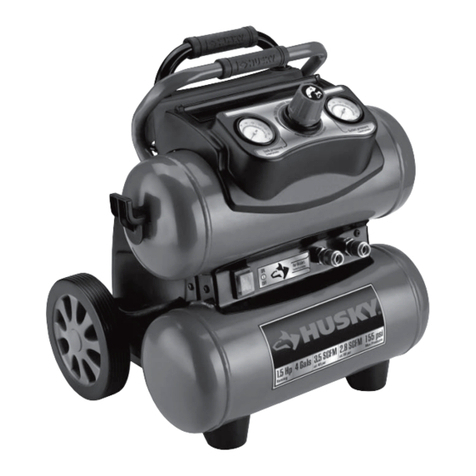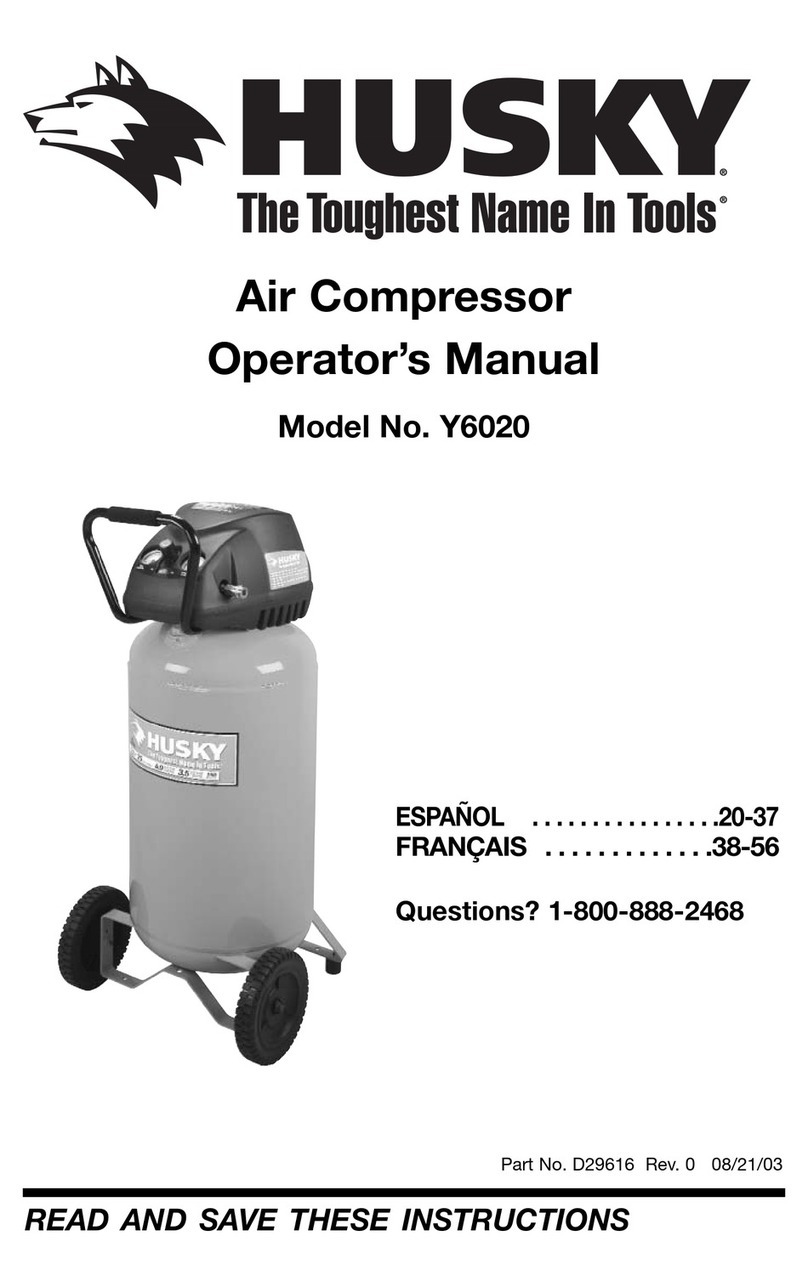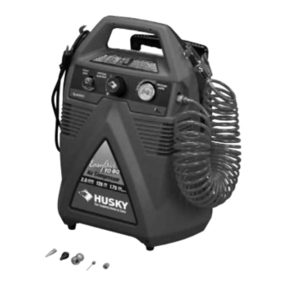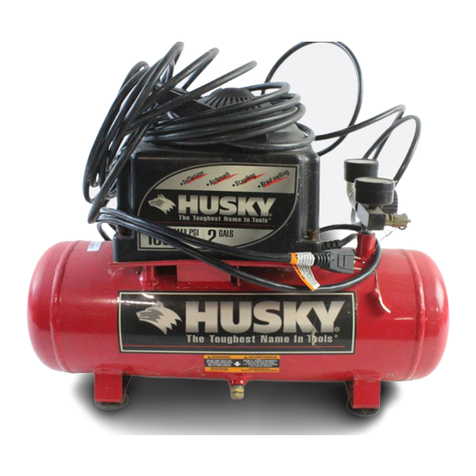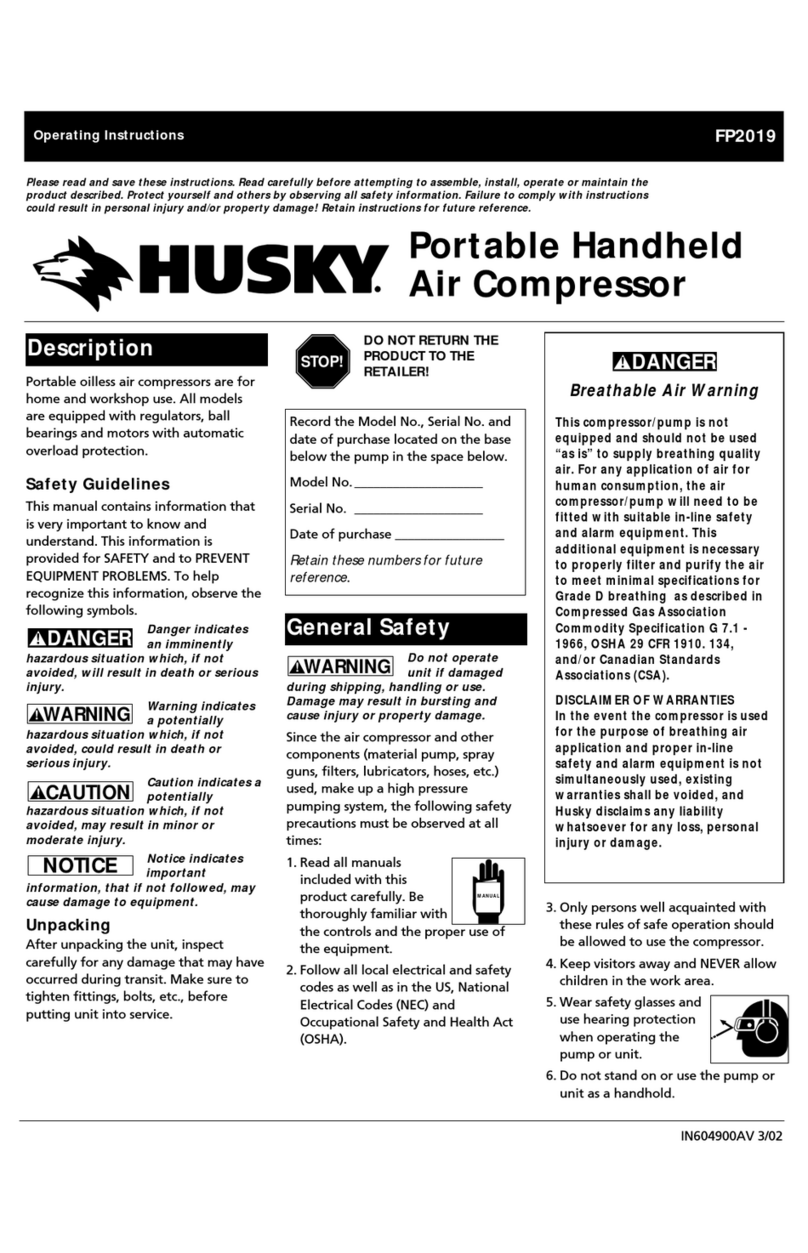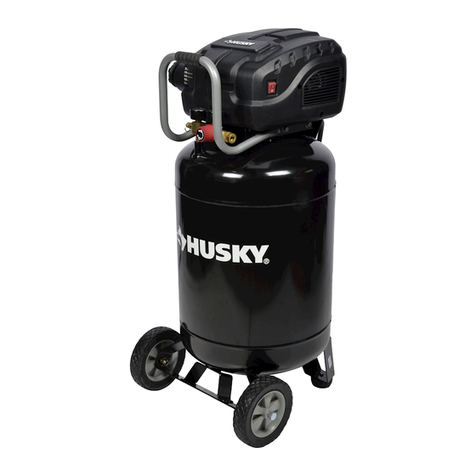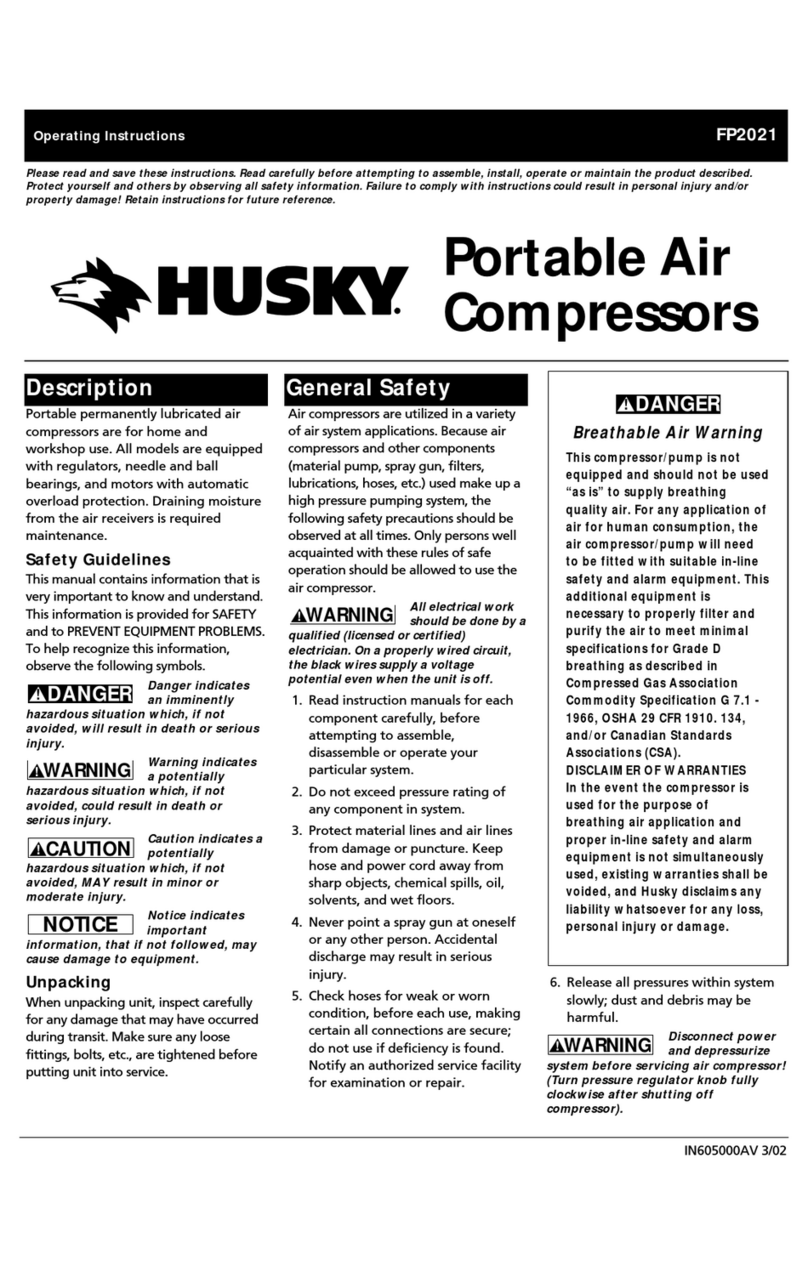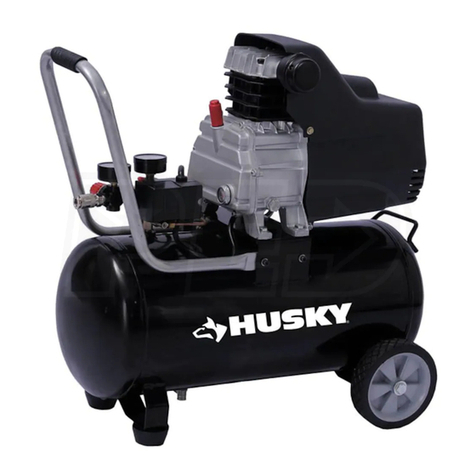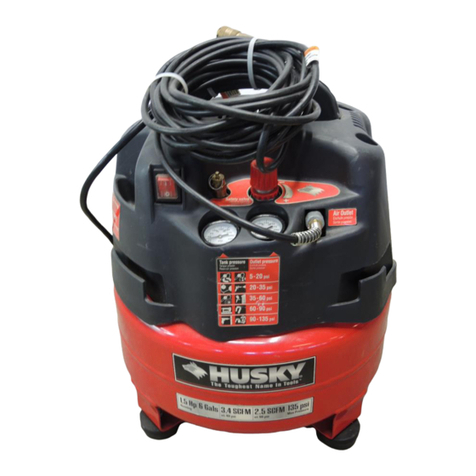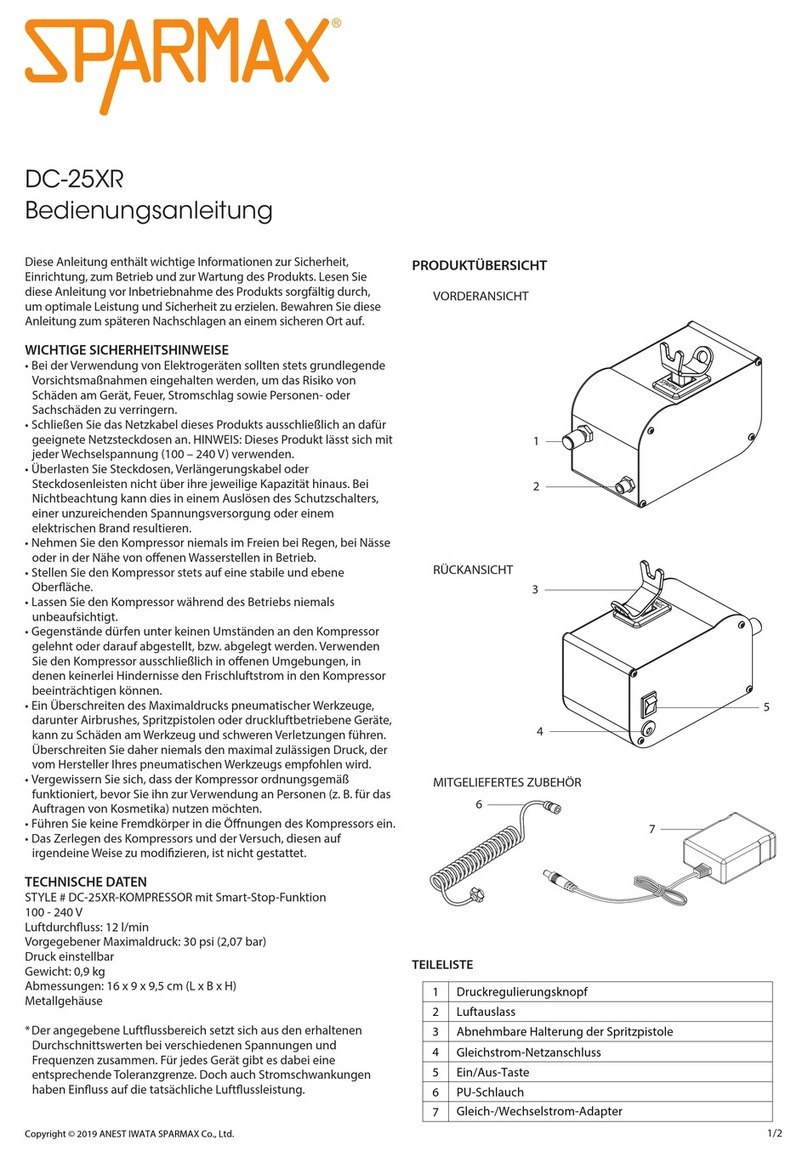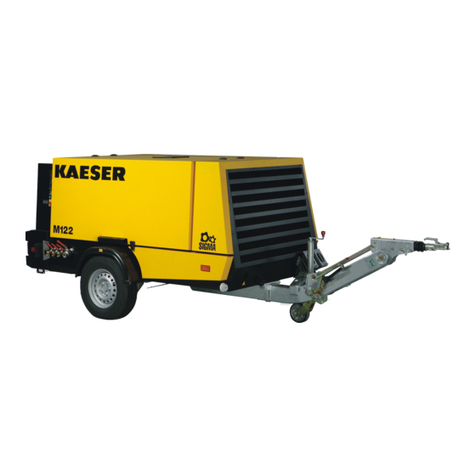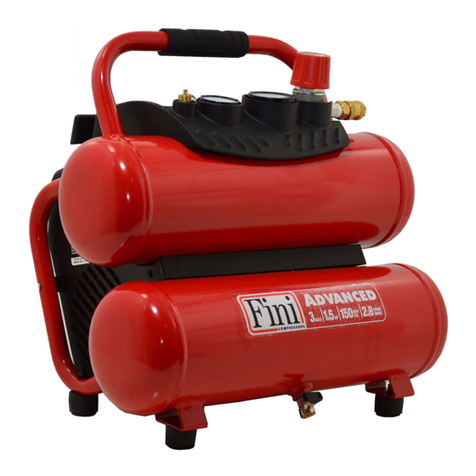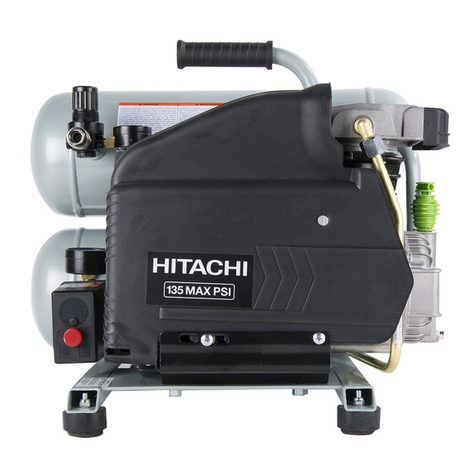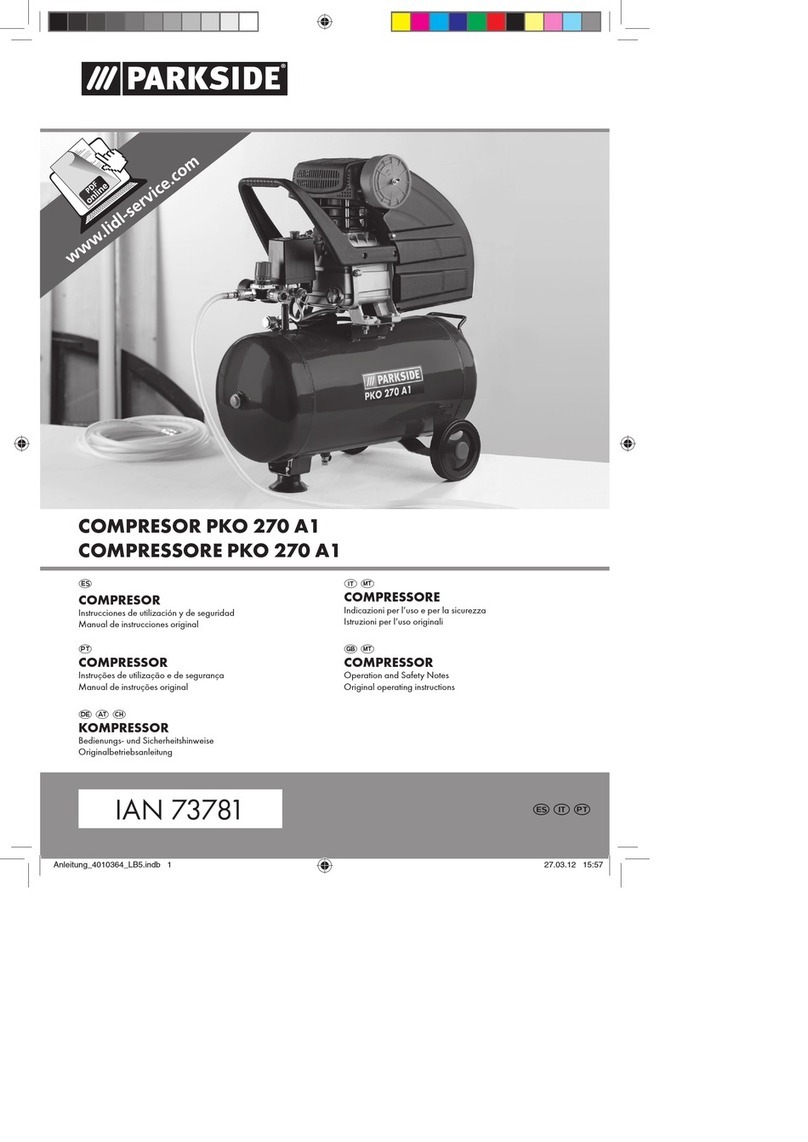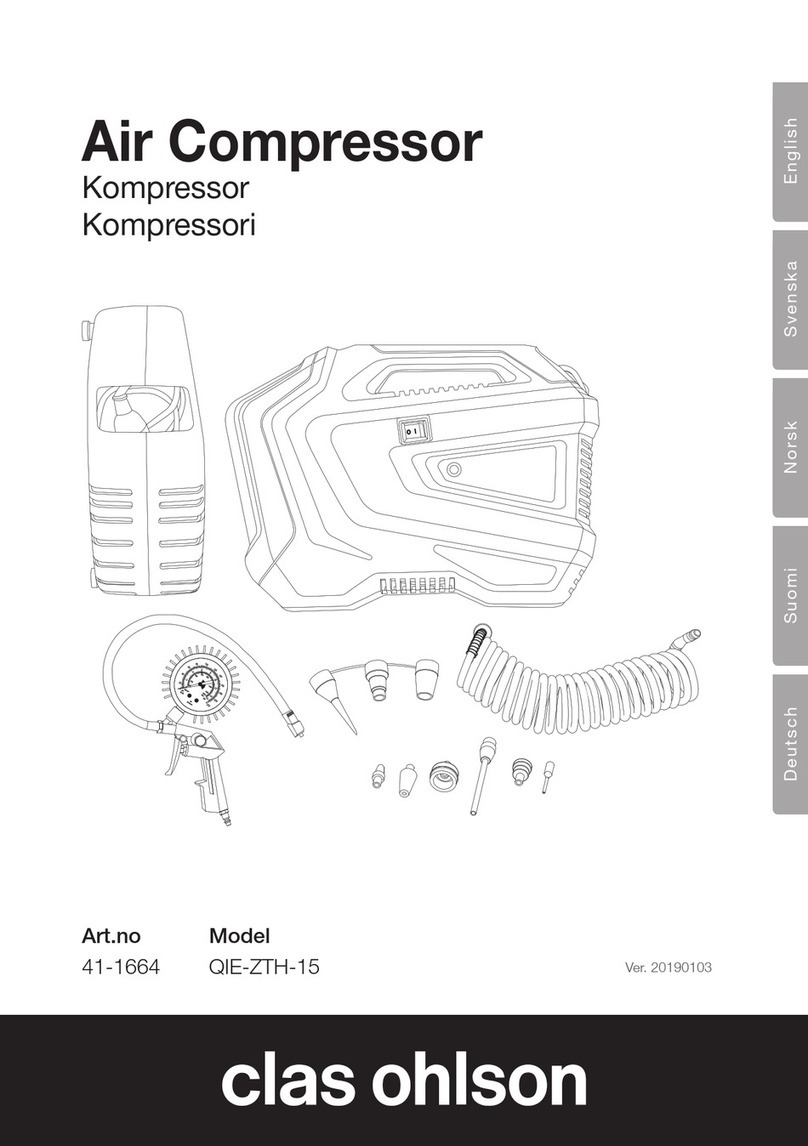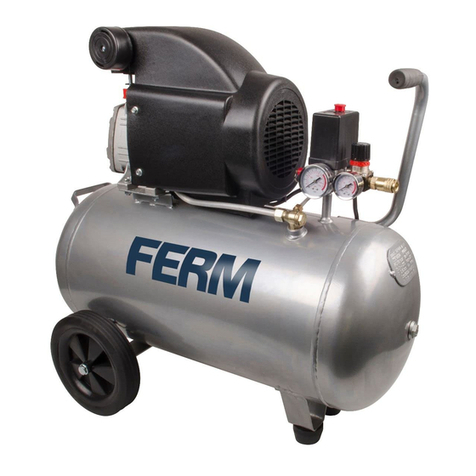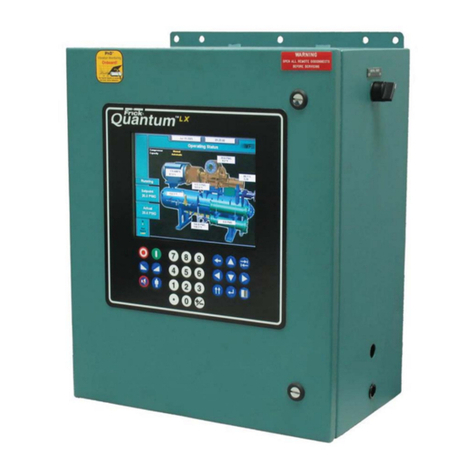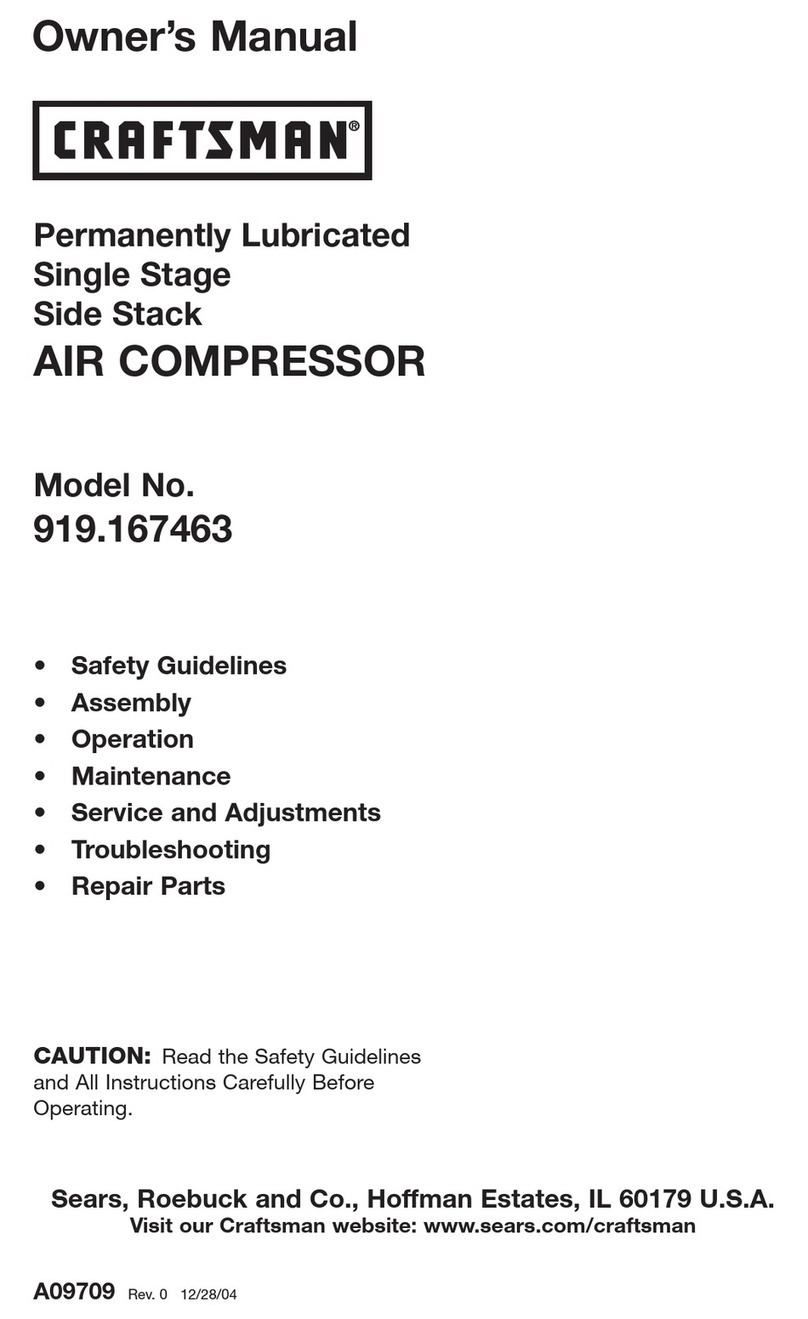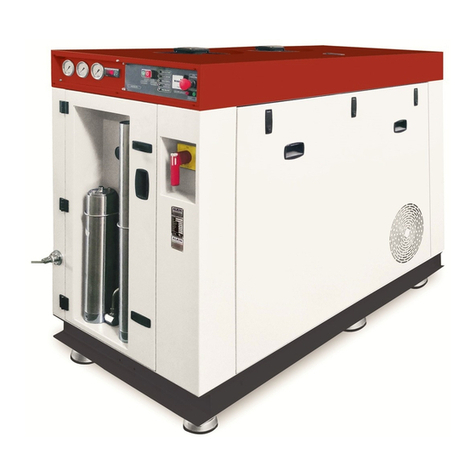4
To Install the Air Intake Filter
Remove the plastic plug from
the compressor head. Remove
the air intake filter from the poly
bag and thread it onto the head
of the compressor as shown.
CAUTION
Do not attempt to start the air compressor
without first adding oil to the crankcase. Serious
damage can result unless filled with oil. The
pump is shipped without oil from the factory.
Only use non-detergent oils since multi-viscos-
ity motor oils leave carbon deposits on pump
components, thus reducing performance and
compressor life.
WARNING
Drain the tank to release all tank
air pressure before removing the
oil fill cap. Be sure the air vent in
the oil fill cap (see figure to the
right) is free from debris. If air vent
is blocked, pressure can build in
crankcase causing damage to the
compressor and possible personal injury.
Lubrication and Oil
Remove the oil fill cap by turning
it counter-clockwise by hand. Fill
the compressor pump with an air
compressor oil such as SAE-30
non-detergent (API CG/CD Heavy
Duty) oil at slow intervals until the oil reaches
the center of the red circle in the sight glass
(see figure above). Use SAE-10 during extreme
winter conditions.
Location of the Air Compressor
The air compressor should always be located
in a clean, dry, and well ventilated environment.
The unit should have at minimum, 12 inches of
space on each side. The air filter intake should
be free of any debris or obstructions. Check the
air filter on a daily basis to be sure it is clean and
in working order.
Installation & Assembly
WARNING
The air compressor should be turned off and unplugged from the power source before any mainte-
nance is performed as well as the air bled from the tank and the unit allowed time to cool. Personal
injuries could occur from moving parts, electrical sources, compressed air or hot surfaces. The regu-
lator assembly must be attached before use. Failure to assemble correctly could result in leaks and
possible injury. If unsure of assembly instructions or you experience difficulty in the assembly please
call your local service department for further instruction.
Grounding Instructions
This product should be grounded. In the event of
an electrical short circuit, grounding reduces the
risk of electric shock by providing an escape wire
for the electric current. This product is equipped
with a cord having a grounding wire with an ap-
propriate grounding plug. (See the figure below.)
The plug must be plugged into an outlet that is
properly installed and grounded in accordance
with all local codes and ordinances. Check with
a qualified electrician or service personnel if
these instructions are not completely understood
or if in doubt as to whether the tool is properly
grounded.
Grounded
Outlet
Grounding Pin
Plug
